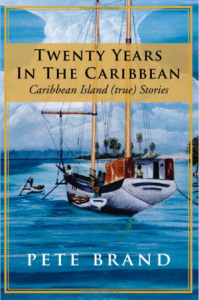 We had no screen on most of the downstairs of our residence, the Tree House. Our hotel rooms were all screened, as was the main building because tourists expected it.
We had no screen on most of the downstairs of our residence, the Tree House. Our hotel rooms were all screened, as was the main building because tourists expected it.
The only mosquito we had was a small bush mosquito that, to our great relief, went to bed when it got dark. Unlike mosquitoes almost everywhere else, these little fellows were in low numbers and never seemed to be troublesome. One reason, however for screening our bedroom at the Tree House was to keep the vast array of moths from troubling us while we read in bed.
Our night-lights drew moths from the adjoining forest and they came in seemingly endless varieties. There were small ones with the most exquisite coloration and large ones that looked as though they were designed by the same engineers that perfected the latest jet fighters. They had rocket shaped bodies with sweptback wings that seemed insufficient to support flight. The British called them Hawk Moths.
We had a couple of visiting professors from the U of Puerto Rico who found them fascinating and often unidentified.
Each morning the night-lights of the Tree House were surrounded by perhaps a dozen moths that had been drawn to the lights over the night.
Two birds seemed to like our house. The Trembler, or, Tromblay, in Creole; (Cinclocerthia ruficauda). A medium sized brown bird that favors rain forests and is found only in the eastern Caribbean islands, the Trembler did the job of a tropical woodpecker by peeling off mosses to find insects instead of hammering holes in trees. His strange characteristic of shaking almost all of the time gave him the name; it did, indeed seem that he was always trembling. The Trembler was people friendly and nested, unafraid, in our exposed ceiling. Our ridge cap was galvanized iron and formed a tunnel of sorts at the peak of the ceiling and it was in this that the Trembler liked to nest; a new nest each year. She had a ring of neon yellow around each eye and it would come to the edge of our room and look down at us if we were reading in bed during the daytime. Those neon eyes and a longish curved beak made her look a little bizarre, but we always considered her a sort of wonderful, never fully approachable, feathered pet who seemed happy to be sharing quarters with us.
The other bird was the local variety of Kingbird that Dominicans called a Peepareet. James Bond, the authority on Caribbean birds, in his book Birds of the West Indies, terms it the Tropical Kingbird (tyrannus melancholicus) or, in Creole, Pipiri Jaune. He was about the size of a mocking bird and was various shades of gray with yellow underparts becoming greenish in the chest. This was another people friendly type and every morning he sat about ten feet out on the electric wires that brought power to our house.
One morning we tried picking up a moth from around the night-lights and throwing it toward the peepareet. The bird immediately flew from its perch and snapped up the fluttering moth in mid air. The peepareet had an unusual jaw noise that gave an audible snap when the bird clamped its mandibles on the moth and this encouraged the children to feed it almost every morning after that. We were grateful that the peepareet was well fed and it also helped keep the house cleared of the moth accumulation.
